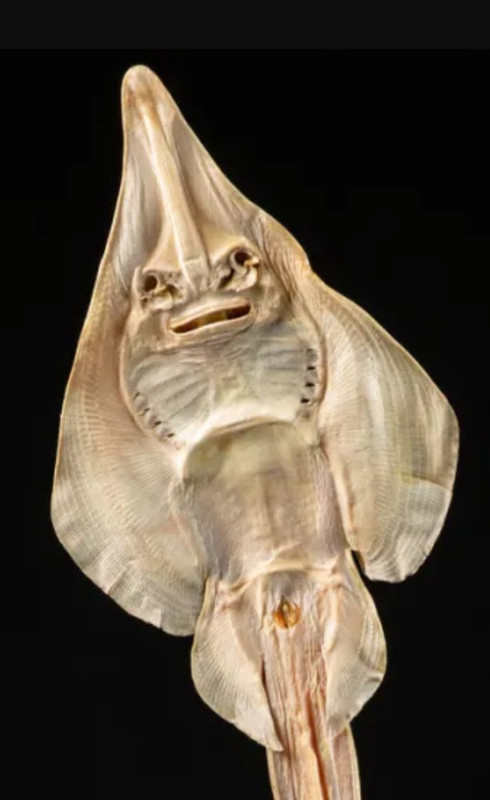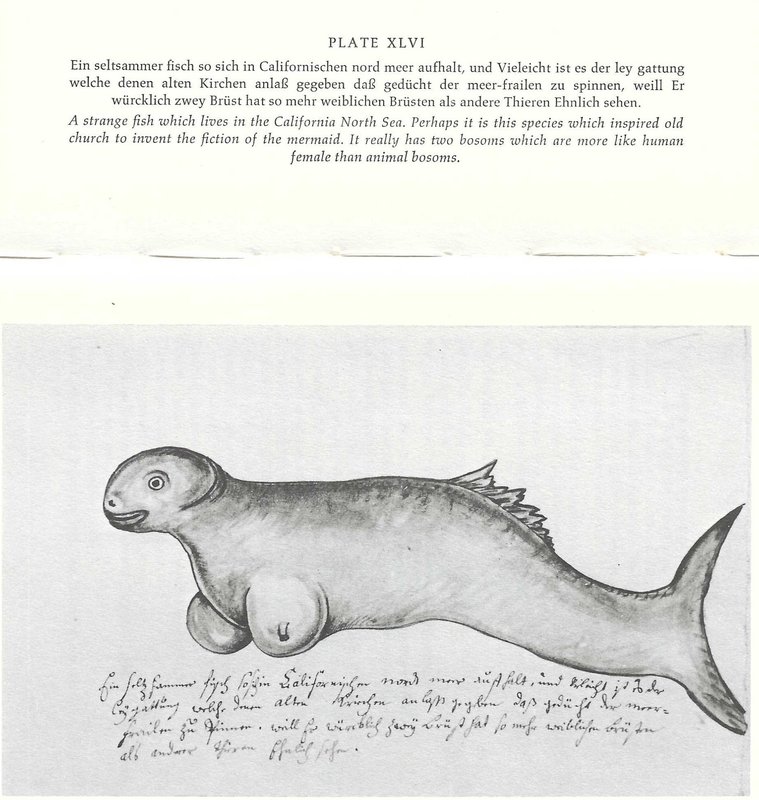Lance S.
Nomad
 
Posts: 231
Registered: 2-16-2021
Member Is Offline
|
|
What was the Pez Mulier?
Was reading an article on Jesuit medicine at the Baja California missions and came across this interesting bit.
In 1711 a Jesuit named Estyneffer wrote a book conceived as an aid to medicinal practitioners at Jesuit missions in the north including California.
The book was popular at the Jesuit missions.
"Finally, a mysterious remedy recommended by Esteyneffer was the bone of the pexe mulier (woman fish), which was good to help stop bleeding, including
from excessive menses; when applied topically, it helped coagulate. According to Esteyneffer, beads of rosaries were made from the bones of this
“fish,” and hanging one of these rosaries to one’s neck, or to the hips, supposedly helped the patient to stop bleeding.82 The pexe mulier was
probably a common sea mammal mistakenly assumed by Jesuit missionaries to have woman-like breasts. Barco, the most important of all Jesuit naturalists
at the California mission, wrote that information about “the pez mulier or nereides” had come from Victoriano Arnés (1736–88), who had found a
dry carcass of this “fish” at a northern beach of the peninsula."
https://brill.com/view/journals/jjs/12/2/article-p209_2.xml
[Edited on 7-1-2025 by Lance S.]
[Edited on 7-1-2025 by Lance S.]
[Edited on 7-1-2025 by Lance S.]
|
|
|
Lance S.
Nomad
 
Posts: 231
Registered: 2-16-2021
Member Is Offline
|
|
My guess is dried shovel nose guitar fish. Present along the Pacific coast of Baja. Arnés found his at Puerto Canoas.
https://saveourseas.com/update/guitarfish-from-mythical-crea...

[Edited on 7-1-2025 by Lance S.]
|
|
|
Lance S.
Nomad
 
Posts: 231
Registered: 2-16-2021
Member Is Offline
|
|
Del Barco's passage about the Pez Mulier.
The rarest fish, which has sometimes been seen on this same coast, is the one called the mulier fish or nereides. 128 The missionary of the new
mission of Santa María, who was Father Victoriano Arnés at the time of establishing it, on one of his voyages, found one of these fish on the beach,
at 31 degrees latitude, already dead and dried. He described it in these words: "The mulier fish had the shape of a woman, halfway up; and of a common
fish, halfway down. Since we found it dry and flattened like a codfish, we couldn't glean much anatomy. However, its face, neck, shoulders, and chest
appeared white, as if it were wearing a corset and its breasts were uncovered; although I don't remember if the nipples were visible. The rest was
covered in scales and ended in a tail like other fish. Its size was about two palms, and in proportion to its width, similar to that of a Codfish. No
arms or hair were found. We found it on the beach opposite my mission of Santa María, in the southern sea, in an inlet formed at the end of the
stream called Catabiñá." Thus far, the aforementioned missionary. Regarding this, it should be noted that if, even when dry, the features of a human
face could be distinguished, it can be inferred that, when this fish was fresh and alive, they would represent them much more accurately, especially
the breasts: when it is known that either great old age or prolonged illness consumes and destroys the breasts of women who are still alive.
|
|
|
AKgringo
Elite Nomad
     
Posts: 6276
Registered: 9-20-2014
Location: Anchorage, AK (no mas!)
Member Is Offline
Mood: Retireded
|
|
I am thinking that the Padre's perception of a "womanlike" fish may have been a side effect of a lifetime of isolation and celibacy.
If you are not living on the edge, you are taking up too much space!
"Could do better if he tried!" Report card comments from most of my grade school teachers. Sadly, still true!
|
|
|
Lance S.
Nomad
 
Posts: 231
Registered: 2-16-2021
Member Is Offline
|
|
"Arnés hastened back to the mission with the Pez Mulier, had a little dress made for it, and called it Linda"
|
|
|
David K
Honored Nomad
        
Posts: 65382
Registered: 8-30-2002
Location: San Diego County
Member Is Offline
Mood: Have Baja Fever
|
|
Padre Ignacio Tirsch illustration (~1760s)
Padre Tirsch was the Jesuit at Mission Santiago during the final Jesuit years. Since San José del Cabo was reduced from a mission to a visita (of
Santiago) from 1748-1768, Tirsch was in charge of that seaside location, too.

|
|
|
AKgringo
Elite Nomad
     
Posts: 6276
Registered: 9-20-2014
Location: Anchorage, AK (no mas!)
Member Is Offline
Mood: Retireded
|
|
The shovel nosed guitar fish appears to a member of the skate family, which would not fit with the statement published; " The rest was covered in
scales and ended in a tail like other fish".
If you are not living on the edge, you are taking up too much space!
"Could do better if he tried!" Report card comments from most of my grade school teachers. Sadly, still true!
|
|
|
Lance S.
Nomad
 
Posts: 231
Registered: 2-16-2021
Member Is Offline
|
|
The thing I find most interesting is that the idea of a Pez Mulier was already part of the Jesuit consciousness (via Juan de Esteyneffer) before
Arnés found the dead animal on the beach.
Never seen that mentioned before.
[Edited on 7-2-2025 by Lance S.]
|
|
|
AKgringo
Elite Nomad
     
Posts: 6276
Registered: 9-20-2014
Location: Anchorage, AK (no mas!)
Member Is Offline
Mood: Retireded
|
|
It is not surprising that Arnés had trouble identifying what a 'woman fish' is, after all, he wasn't a biologist! 
[Edited on 7-2-2025 by AKgringo]
If you are not living on the edge, you are taking up too much space!
"Could do better if he tried!" Report card comments from most of my grade school teachers. Sadly, still true!
|
|
|
David K
Honored Nomad
        
Posts: 65382
Registered: 8-30-2002
Location: San Diego County
Member Is Offline
Mood: Have Baja Fever
|
|
Don't you think Tirsch drew a 'woman fish' pretty well, don't you guys? LOL
|
|
|

